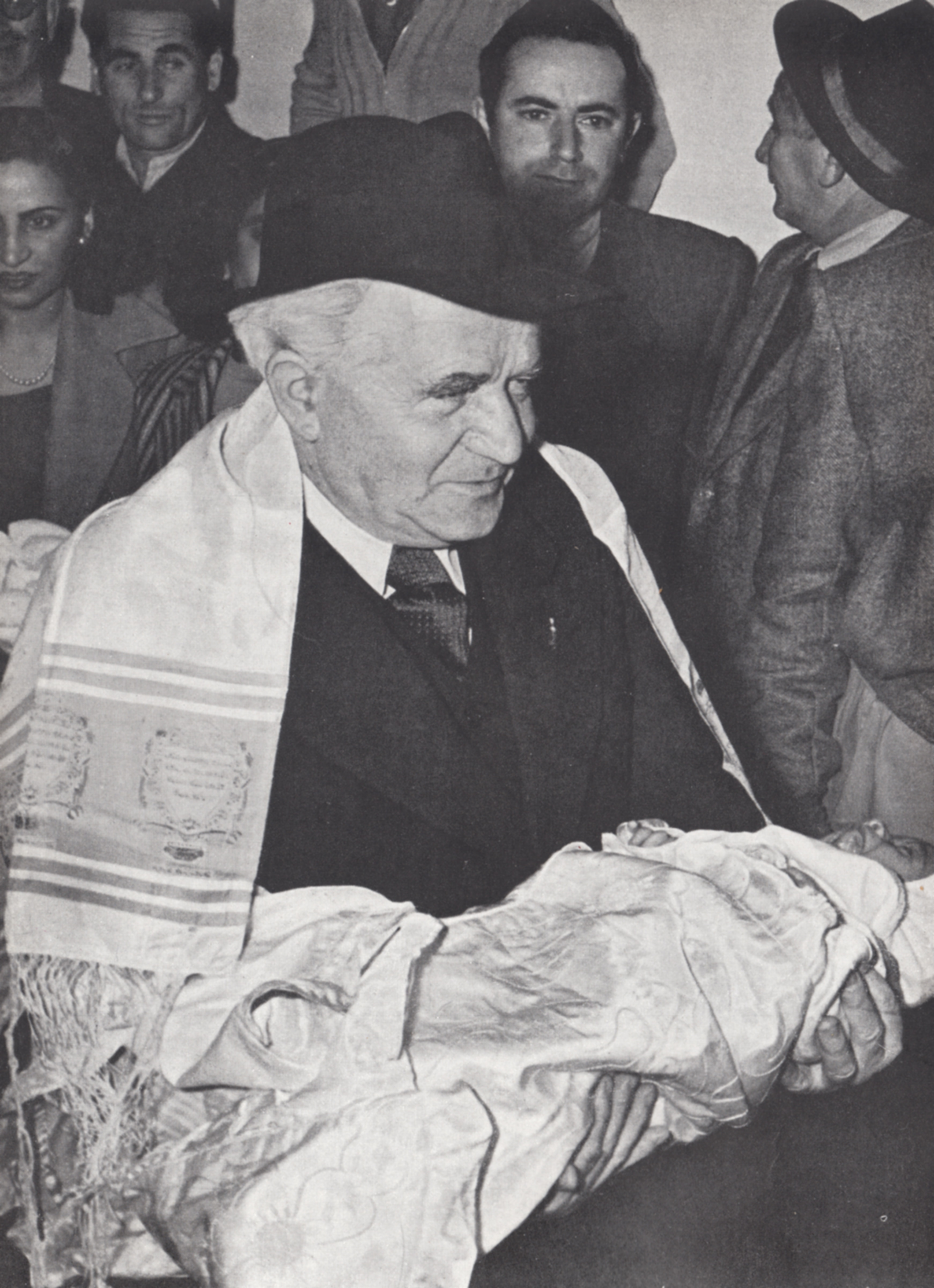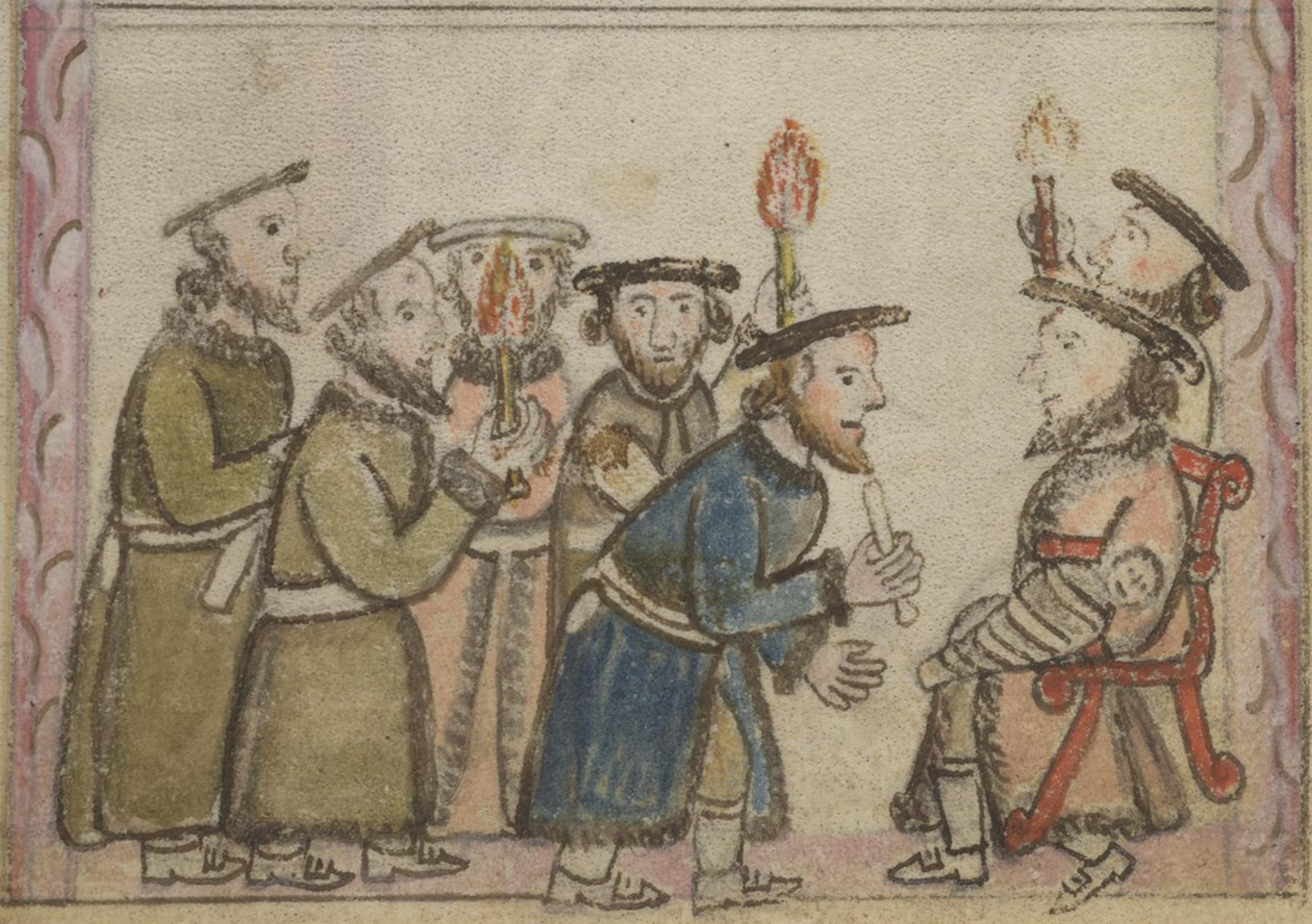|
Sandek
A sandek or sandak ( he, סנדק "companion of child") is a person honored at a Jewish ''brit milah'' (circumcision) ceremony, traditionally either by holding the baby boy on the knees or thighs while the mohel performs the brit milah, or by handing the baby to the mohel. In Modern Hebrew, ''sandak'' is also the word for godfather; the film The Godfather is known in Hebrew as ''HaSandak''. Etymology The origin of the term has been attributed to a derivation from the Greek ''sunteknos'' (''syn-'', meaning "plus", and ''tekno'', meaning "child"), which means "companion of child". Alternatively, it may be derived from Greek σύνδικος (Latin, "syndicus"), in the sense of "representative," "patron," "advocate." History A number of references in midrashim and other early rabbinical works testify to the existence of the sandek in the Talmudic age. In medieval rabbinical literature the references to the office are numerous, and it appears to have been well established and high ... [...More Info...] [...Related Items...] OR: [Wikipedia] [Google] [Baidu] |
Brit Milah
The ''brit milah'' ( he, בְּרִית מִילָה ''bərīṯ mīlā'', ; Ashkenazi Hebrew, Ashkenazi pronunciation: , "Covenant (religion), covenant of circumcision"; Yiddish pronunciation: ''bris'' ) is Religion and circumcision, the ceremony of circumcision in Judaism. According to the Book of Genesis, God in Judaism, God commanded the Patriarchs (Bible), biblical patriarch Abraham to be circumcised, an act to be followed by his male descendants on the eighth day of life, symbolizing Covenant of the pieces, the covenant between God and the Jewish people. Today, it is generally performed by a mohel on the eighth day after the infant's birth and is followed by a celebratory meal known as ''seudat mitzvah''. ''Brit Milah'' is considered among the 613 commandments, most important and central commandments in Judaism, and the rite has played a central role in Jewish history, the formation and history of Jewish culture, Jewish civilization. The Talmud, when discussing the importa ... [...More Info...] [...Related Items...] OR: [Wikipedia] [Google] [Baidu] |
Aliyah (Torah)
An aliyah (Hebrew עליה, or aliya and other variant English spellings) is the calling of a member of a Jewish congregation up to the '' bimah'' for a segment of the formal Torah reading. The person who receives the aliyah goes up to the ''bimah'' before the reading and recites a blessing for reading of the Torah. After the portion of the Torah is read, the recipient recites another blessing. In many congregations, the recipient will stand to the side of the ''bimah'' during the next person's reading. Process A synagogue official, called a '' gabbai'', calls up several people (men in Orthodox and some Conservative congregations, or both men and women in others), in turn, to be honored with an ''aliyah'' ( he, עליה; pl. עליות, ''aliyot''; "ascent" or "going up"). The honoree (or, more usually, a designated reader) recites a blessing over the Torah, between each verse. Each reads a section of the day's Torah portion. There are always at least three ''olim'' (people called ... [...More Info...] [...Related Items...] OR: [Wikipedia] [Google] [Baidu] |
Mitzva
In its primary meaning, the Hebrew word (; he, מִצְוָה, ''mīṣvā'' , plural ''mīṣvōt'' ; "commandment") refers to a commandment commanded by God to be performed as a religious duty. Jewish law () in large part consists of discussion of these commandments. According to religious tradition, there are 613 such commandments. In its secondary meaning, the word ''mitzvah'' refers to a deed performed in order to fulfill such a commandment. As such, the term ''mitzvah'' has also come to express an individual act of human kindness in keeping with the law. The expression includes a sense of heartfelt sentiment beyond mere legal duty, as "you shall love your neighbor as yourself" (Leviticus 19:18). The opinions of the Talmudic rabbis are divided between those who seek the purpose of the ''mitzvot'' and those who do not question them. The latter argue that if the reason for each ''mitzvah'' could be determined, people might try to achieve what they see as the purpose of t ... [...More Info...] [...Related Items...] OR: [Wikipedia] [Google] [Baidu] |
Temple In Jerusalem
The Temple in Jerusalem, or alternatively the Holy Temple (; , ), refers to the two now-destroyed religious structures that served as the central places of worship for Israelites and Jews on the modern-day Temple Mount in the Old City of Jerusalem. According to the Hebrew Bible, the Solomon's Temple, First Temple was built in the 10th century BCE, during the reign of Solomon over the Kingdom of Israel (united monarchy), United Kingdom of Israel. It stood until , when it was destroyed during the Siege of Jerusalem (587 BC), Babylonian siege of Jerusalem. Almost a century later, the First Temple was replaced by the Second Temple, which was built after the Neo-Babylonian Empire was conquered by the Achaemenid Empire, Achaemenid Persian Empire. While the Second Temple stood for a longer period of time than the First Temple, it was likewise destroyed during the Siege of Jerusalem (70 CE), Roman siege of Jerusalem in 70 CE. Projects to build the hypothetical "Third Temple" have not co ... [...More Info...] [...Related Items...] OR: [Wikipedia] [Google] [Baidu] |
Incense Offering
The incense offering ( he, ) in Judaism was related to perfumed offerings on the altar of incense in the time of the Tabernacle and the First and Second Temple period, and was an important component of priestly liturgy in the Temple in Jerusalem. In the Hebrew Bible The sacred incense prescribed for use in the wilderness Tabernacle was made of costly materials that the congregation contributed (). The Book of Exodus describes the recipe: At the end of the Holy compartment of the tabernacle, next to the curtain dividing it off from the Most Holy, was located the incense altar (). According to the Books of Chronicles, there was also a similar incense altar in Solomon's temple in Jerusalem (). Every morning and evening the sacred incense was burned (). Once a year, on the Day of Atonement, coals from the altar were taken in a censer, or fire holder, together with two handfuls of incense, into the Holy of Holies, where the incense was made to smoke before the mercy seat of the a ... [...More Info...] [...Related Items...] OR: [Wikipedia] [Google] [Baidu] |
Kohen
Kohen ( he, , ''kōhēn'', , "priest", pl. , ''kōhănīm'', , "priests") is the Hebrew word for "priest", used in reference to the Aaronic priesthood, also called Aaronites or Aaronides. Levitical priests or ''kohanim'' are traditionally believed and halakhically required to be of direct patrilineal descent from the biblical Aaron (also ''Aharon''), brother of Moses. During the existence of the Temple in Jerusalem, ''kohanim'' performed the daily and holiday (Yom Tov) duties of korban, sacrificial offerings. Today, ''kohanim'' retain a lesser though distinct status within Rabbinic and Karaite Judaism and are bound by additional restrictions according to Orthodox Judaism. In the Samaritan community, the kohanim have remained the primary religious leaders. Ethiopian Jewish religious leaders are sometimes called ''kahen'', a form of the same word, but the position is not hereditary and their duties are more like those of rabbis than kohanim in most Jewish communities. E ... [...More Info...] [...Related Items...] OR: [Wikipedia] [Google] [Baidu] |
Midrash
''Midrash'' (;"midrash" ''Random House Webster's Unabridged Dictionary''. he, מִדְרָשׁ; or מִדְרָשׁוֹת ''midrashot'') is expansive using a rabbinic mode of interpretation prominent in the . The word itself means "textual interpretation", "study", or " |
Tetragrammaton
The Tetragrammaton (; ), or Tetragram, is the four-letter Hebrew language, Hebrew theonym (transliterated as YHWH), the name of God in the Hebrew Bible. The four letters, written and read from right to left (in Hebrew), are ''yodh'', ''he (letter), he'', ''waw (letter), waw'', and ''he''. The name may be derived from a verb that means "to be", "to exist", "to cause to become", or "to come to pass".Translation notes for While there is no consensus about the structure and etymology of the name, the form ''Yahweh'' is now accepted almost universally, though the vocalization ''Jehovah'' continues to have wide usage. The books of the Torah and the rest of the Hebrew Bible except Book of Esther, Esther, Ecclesiastes, and (with Tetragrammaton#Texts with similar theonyms, a possible instance of the Jah, short form in verse 8:6) the Song of Songs contain this Hebrew language, Hebrew name. Observant Jews and those who follow Talmudic Jewish traditions do not pronounce nor do they re ... [...More Info...] [...Related Items...] OR: [Wikipedia] [Google] [Baidu] |
Vilna Gaon
Elijah ben Solomon Zalman, ( he , ר' אליהו בן שלמה זלמן ''Rabbi Eliyahu ben Shlomo Zalman'') known as the Vilna Gaon (Yiddish: דער װילנער גאון ''Der Vilner Gaon'', pl, Gaon z Wilna, lt, Vilniaus Gaonas) or Elijah of Vilna, or by his Hebrew acronym HaGra ("HaGaon Rabbenu Eliyahu": "The sage, our teacher, Elijah"; Sialiec, April 23, 1720Vilnius October 9, 1797), was a Lithuanian Jewish Talmudist, halakhist, kabbalist, and the foremost leader of misnagdic (non- hasidic) Jewry of the past few centuries. He is commonly referred to in Hebrew as ''ha-Gaon he-Chasid mi-Vilna'', "the pious genius from Vilnius". Through his annotations and emendations of Talmudic and other texts, he became one of the most familiar and influential figures in rabbinic study since the Middle Ages. He is considered as one of the ''Acharonim'', and by some as one of the ''Rishonim''. Large groups of people, including many ''yeshivas'', uphold the set of Judaism, Jewish customs an ... [...More Info...] [...Related Items...] OR: [Wikipedia] [Google] [Baidu] |
Yoreh De'ah
Yoreh De'ah ( he, יורה דעה) is a section of Rabbi Jacob ben Asher's compilation of halakha (Jewish law), Arba'ah Turim around 1300. This section treats all aspects of Jewish law not pertinent to the Hebrew calendar, finance, torts, marriage, divorce, or sexual conduct. (Nevertheless there exists occasional overlap into the excluded areas). ''Yoreh De'ah'' is therefore the most diversified area of Jewish law. Later, Rabbi Yosef Karo modeled the framework of his own compilation of practical Jewish law, the Shulchan Aruch, after the ''Arba'ah Turim.'' Many later commentators used this framework, as well. Thus, ''Yoreh De'ah'' in common usage may refer to an area of halakha, non-specific to Rabbi Jacob ben Asher's compilation. Topics include, but are not limited to: * Permitted and forbidden foods, * Circumcision, * Gentiles, * Foreign worship, * Prohibition against charging interest, * Oaths, * Converts, * Honoring parents, * Honoring scholars and the elderly, * Charity, ... [...More Info...] [...Related Items...] OR: [Wikipedia] [Google] [Baidu] |
Moses Isserles
). He is not to be confused with Meir Abulafia, known as "Ramah" ( he, רמ״ה, italic=no, links=no), nor with Menahem Azariah da Fano, known as "Rema MiPano" ( he, רמ״ע מפאנו, italic=no, links=no). Rabbi Moses Isserles ( he, משה בן ישראל איסרלישׂ, pl, Mojżesz ben Israel Isserles) (22 February 1530 / 25 Adar I 5290 – 11 May 1572 / 18 Iyar 5332), also known by the acronym Rema, was an eminent Polish Ashkenazic rabbi, talmudist, and ''posek'' (expert in Jewish law). Biography Isserles was born in Kraków, Poland. His father, Israel ben Josef (known as Isserl), was a prominent talmudist and independently wealthy, who had probably headed the community; his grandfather, Jehiel Luria, was the first rabbi of Brisk. (In an era which preceded the common use of surnames, Moses became known by his patronymic, Isserles.) He studied in Lublin under Rabbi Shalom Shachna, who would later become his father-in-law. Among his fellow pupils were his relative S ... [...More Info...] [...Related Items...] OR: [Wikipedia] [Google] [Baidu] |





